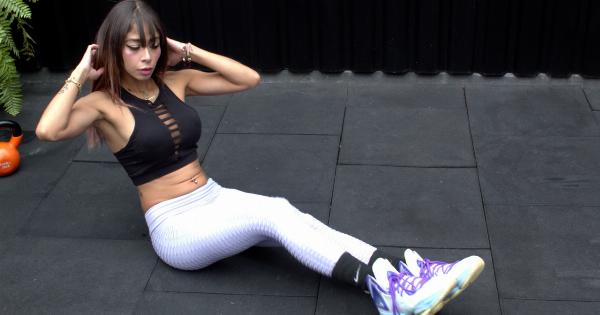Gymnastics is a highly demanding sport that requires a lot of strength, flexibility, agility, and coordination. It involves a variety of movements such as tumbling, vaulting, balance beam, rings, bars, and floor exercise.
While gymnastics is generally considered safe, certain movements can carry a higher risk of injury than others. In this article, we will explore some of the most common risks associated with gymnastics movements and how to prevent them.
Tumbling
Tumbling is a set of acrobatic moves performed in a sequence on a padded mat. Some of the most common tumbling moves are back handsprings, front flips, roundoffs, and aerials.
While tumbling can be very exciting to watch, it can also be quite dangerous if not performed correctly. Here are some of the most common risks associated with tumbling:.
Head and Neck Injuries
Head and neck injuries are the most serious risk associated with tumbling. This is especially true if a gymnast loses control and lands on their head or neck. These types of injuries can lead to paralysis or even death.
It is essential to learn proper technique and to use proper equipment, such as mats and spotters, to minimize the risk of head and neck injuries.
Wrist and Ankle Injuries
Wrist and ankle injuries are also common in tumbling. These injuries typically occur when a gymnast lands awkwardly or twists their ankle or wrist during a flip or twist.
Wrist and ankle injuries can be prevented by stretching and strengthening these areas before practicing tumbling. Using proper technique and landing on the balls of your feet can also help reduce the risk of injury.
Vaulting
Vaulting is a gymnastics event where a gymnast runs down a runway, jumps onto a springboard, and then performs a variety of flips and twists in the air before landing on a padded mat.
While not as risky as tumbling, there are still some risks associated with vaulting:.
Head and Neck Injuries
Head and neck injuries are a risk in vaulting if a gymnast loses control and lands on their head or neck. This risk can be minimized by using proper technique and landing on the balls of your feet.
Also, vaulting should only be performed on a padded mat, and spotters should be used to help prevent head and neck injuries.
Leg Injuries
Leg injuries are also a risk in vaulting. These injuries typically occur when a gymnast lands awkwardly or hyperextends their legs during a vault. Stretching and strengthening your legs before practicing vaulting can help prevent these types of injuries.
Proper technique and landing on your feet can also help reduce the risk of leg injuries.
Balance Beam
The balance beam is a narrow, elevated beam used in gymnastics to test a gymnast’s balance and agility. While not as physically demanding as tumbling or vaulting, the balance beam carries its own set of risks:.
Head and Neck Injuries
Head and neck injuries are a major risk in balance beam. These injuries typically occur when a gymnast falls off the beam and lands on their head or neck.
To prevent head and neck injuries, gymnasts should use a padded mat, practice with spotters, and use proper technique.
Wrist Injuries
Wrist injuries are also a risk in balance beam. These injuries typically occur when a gymnast lands awkwardly or hyperextends their wrists while performing a move on the beam.
Stretching and strengthening your wrists before practicing balance beam can help prevent these types of injuries, as can using proper technique and landing on the balls of your feet.
Rings and Bars
Rings and bars are two gymnastics events that require a lot of upper body strength and control. While these events do not carry as much of a risk of head and neck injuries as tumbling or vaulting, they do have their own set of risks:.
Shoulder Injuries
Shoulder injuries are a risk in rings and bars. These injuries typically occur when a gymnast places too much stress on their shoulders during a move or when they overuse their shoulders.
Stretching and strengthening your shoulders before practicing rings or bars can help prevent these types of injuries. Using proper technique and not pushing yourself beyond your ability level can also minimize your risk of shoulder injuries.
Elbow Injuries
Elbow injuries are also a risk in rings and bars. These injuries typically occur when a gymnast hyperextends their elbow during a move or when they overuse their elbow.
Stretching and strengthening your elbows before practicing rings or bars can help prevent these types of injuries. Using proper technique and not pushing yourself beyond your ability level can also minimize your risk of elbow injuries.
Conclusion
Gymnastics is an exciting and demanding sport that requires a lot of skill, strength, and flexibility. While it is generally safe, there are certain movements that carry a higher risk of injury than others.
By learning proper technique, using proper equipment, and stretching and strengthening your muscles before practicing, you can minimize your risk of injury and enjoy all the benefits that gymnastics has to offer.



























